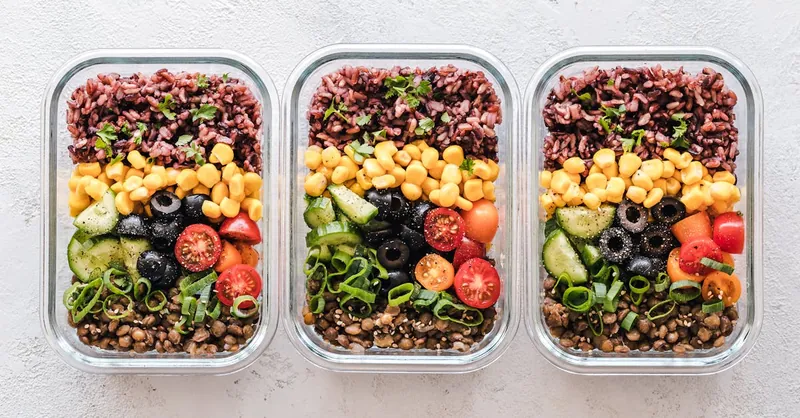Minimalism and Eco-Friendly Habits for a Simpler Life
Category: Lifestyle
Embrace Minimalism and Eco-Friendly Living for True Freedom
If you're seeking a clearer, more intentional way of living, you're likely drawn to minimalism and eco-friendly habits as tools to simplify and enhance your life. Perhaps you’ve felt overwhelmed by clutter—both physical and mental—or guilty about your environmental footprint. Maybe you’ve already started decluttering but struggle to maintain those habits sustainably, or you’re just starting to explore how minimalism can align with green living. This post is tailored to meet you where you are, whether you're a curious beginner or someone who has dabbled in minimalism but wants to integrate eco-friendly practices deeply.
Here, we won’t just cover the surface. Instead, we’ll present practical, actionable strategies to reduce excess, minimize waste, and cultivate habits that honor both personal well-being and the planet. You'll find clarity on merging simplicity with sustainability in everyday life, from mindful consumption to eco-conscious decision-making. Unlike many generic guides, this post focuses on the synergy between minimalism and environmental mindfulness, ensuring you walk away inspired and equipped to transform your lifestyle holistically. Read on to discover how these aligned practices can bring you greater fulfillment by simplifying your surroundings and your impact.
- Embrace Minimalism and Eco-Friendly Living for True Freedom
- Understanding Minimalism: More Than Just Decluttering
- The Intersection of Minimalism and Eco-Friendly Living
- Practical Decluttering Tips with an Eco-Conscious Twist
- Adopting Eco-Friendly Habits in Daily Life
- Mindful Consumption: How to Buy Less but Buy Better
- Simplifying Your Wardrobe Sustainably
- Minimalist Meal Planning for Sustainability
- Creating a Minimalist and Green Home Environment
- Mindset Shifts to Support Minimalism and Sustainability
- Tools and Resources to Help You on Your Journey
Understanding Minimalism: More Than Just Decluttering
Minimalism is often misunderstood as simply clearing out clutter or owning fewer possessions. While decluttering is a visible step, true minimalism goes much deeper—it’s a mindset centered on intentional living and consciously reducing excess to foster mental clarity and personal freedom. Minimalism encourages you to evaluate what truly adds value to your life, letting go not only of physical items but also of distractions, unhealthy habits, and unnecessary commitments that cloud your focus and peace of mind.
At its core, minimalism is about creating space—both literally and figuratively—to prioritize what matters most. This means making deliberate choices that align with your values and promote sustainability, whether that’s buying fewer, higher-quality items, simplifying decisions to reduce stress, or cultivating practices that support your environmental footprint. By embracing minimalism beyond tidying up, you unlock the freedom to live more purposefully, experiencing enhanced mental well-being and a lighter impact on the planet.

Image courtesy of Mikhail Nilov
The Intersection of Minimalism and Eco-Friendly Living
Minimalism and eco-friendly living naturally complement each other through their shared emphasis on reducing excess and fostering intentional choices. At the heart of minimalism lies the principle of consuming less—not just for the sake of simplicity, but to minimize waste and the environmental impact of our everyday habits. By prioritizing quality over quantity and owning only what we truly need and value, we inherently support sustainability goals such as conserving resources and lowering carbon footprints.
This alignment manifests in several impactful ways:
- Reduced Consumption: Embracing minimalism means buying fewer products, which directly lessens demand for manufacturing and the depletion of natural resources.
- Waste Minimization: When you carefully select possessions and avoid impulse purchases, there is less packaging, fewer disposables, and a decrease in items ending up in landfills.
- Energy Savings: Maintaining fewer belongings requires less energy for upkeep, storage, and cleaning, contributing to lower household energy use.
- Mindful Resource Use: Minimalism encourages practices like reusing, repairing, and repurposing, which extend product lifecycles and reduce environmental strain.
- Simplified Lifestyle Choices: The minimalist mindset fosters conscious decisions around food, transportation, and consumption habits that collectively shrink your ecological footprint.
By integrating minimalism with eco-conscious living, you move beyond surface-level habits into a transformative lifestyle shift that empowers both personal freedom and planetary health. This synergy proves that simplifying your life is not just about aesthetics or convenience—it’s a powerful strategy for living sustainably in a resource-limited world.

Image courtesy of Polina Tankilevitch
Practical Decluttering Tips with an Eco-Conscious Twist
Decluttering is a cornerstone of minimalism, but how you clear out your space can significantly impact the environment. Instead of discarding unwanted items into the trash, adopting an eco-conscious decluttering approach ensures your efforts support sustainability by reducing landfill waste and promoting reuse. Here’s how to responsibly manage your decluttering process:
-
Donate to Extend Life Cycles: Before tossing items, consider donating to local charities, shelters, schools, or community centers. Giving clothes, furniture, books, and household goods a second life not only helps others but also prevents perfectly usable items from becoming waste. Many nonprofits also accept repairable goods, allowing them to refurbish and redistribute.
-
Recycle Properly: For items that are no longer usable, recycling is the next best step. Check local recycling guidelines to separate plastics, metals, glass, and electronics correctly. Some materials, such as batteries or electronics, require special handling at designated recycling centers to avoid pollution.
-
Repurpose Creatively: Transforming old possessions into new, functional items lowers demand for new resources. For example, glass jars can become storage containers, worn-out clothes can be sewn into cleaning rags, and wooden furniture parts can be reimagined as shelves or planters.
-
Avoid Single-Use Disposal: Resist the urge to throw away items simply because they no longer fit your style or purpose. Instead, think critically about alternative uses or responsible hand-offs. This mindset reduces single-use waste and reinforces minimalism as a sustainable practice.
-
Digitize When Possible: Paper clutter can be minimized by scanning important documents and photos, reducing physical storage needs and paper waste. Just be mindful of digital energy use by organizing and deleting unnecessary files regularly.
By incorporating these strategies, your decluttering journey becomes an act of environmental stewardship. This mindful approach aligns perfectly with the minimalist ethos—prioritizing intentional living while honoring the planet through reduced waste and thoughtful resource management. Embracing responsible decluttering transforms clearing your space into an empowering, eco-friendly habit that supports both mental clarity and a healthier Earth.

Image courtesy of RDNE Stock project
Adopting Eco-Friendly Habits in Daily Life
Embracing minimalism naturally leads to adopting eco-friendly habits that simplify daily routines while reducing environmental impact. Small, intentional changes can make a significant difference when practiced consistently. Start by reducing single-use plastics, one of the largest contributors to pollution and landfill overflow. Replace disposable water bottles, shopping bags, and food wraps with reusable alternatives like stainless steel bottles, cloth bags, and beeswax wraps. These swaps not only minimize waste but also encourage a more mindful approach to consumption.
Choosing sustainable products is another crucial step. Opt for items made from natural, renewable, or recycled materials, and prioritize quality over quantity to ensure longevity. Supporting brands that demonstrate transparency in ethical sourcing and environmental responsibility fosters a circular economy and reduces overall resource depletion. Additionally, conserving energy and water at home aligns perfectly with a minimalist lifestyle by cutting unnecessary consumption. Simple habits such as turning off lights when not in use, unplugging electronics, using energy-efficient appliances, taking shorter showers, and fixing leaks can collectively lower your ecological footprint while encouraging a conscious awareness of resources. Integrating these eco-friendly practices with your minimalist mindset transforms daily living into a powerful expression of sustainability and simplicity.

Image courtesy of ready made
Mindful Consumption: How to Buy Less but Buy Better
One of the most powerful ways to minimize waste and truly embrace both minimalism and eco-friendly living is to become a mindful consumer—learning to buy less but buy better. This means shifting from impulse purchases and fast consumption toward thoughtful acquisition focused on quality, durability, and ethical sourcing. By prioritizing items that last longer and have a transparent, responsible production process, you reduce the frequency of replacements and help curb the environmental harm associated with overconsumption.
Prioritize Quality and Durability
When shopping, opt for products made from high-quality materials designed to withstand time and regular use. Investing slightly more upfront in durable goods such as well-crafted clothing, sturdy furniture, or long-lasting kitchenware ultimately saves money and reduces landfill waste by decreasing the need for frequent replacements. Look for certifications or reviews highlighting durability, and consider timeless, versatile designs that stay relevant rather than trend-driven items that encourage fast disposal.
Choose Ethical and Sustainable Brands
Supporting brands committed to ethical labor practices, sustainable materials, and transparent supply chains amplifies the positive impact of your purchases. Research companies that use organic, recycled, or renewable resources and maintain fair working conditions, as this helps foster a more sustainable economy. Shopping secondhand or from local artisans is another excellent way to reduce your environmental footprint while valuing craft and community.
Buy What You Truly Need and Will Use
Mindful consumption requires honest self-assessment before buying: ask yourself if an item serves a real purpose, enriches your life, or replaces something already functional. Avoid falling into the trap of treating purchases as instant fixes for boredom or emotional stress. This thoughtful buying mindset discourages clutter accumulation and waste generation, reinforcing minimalist values.
By integrating quality over quantity, ethical sourcing, and intentional need into your purchasing habits, you not only simplify your life but actively contribute to reducing global waste and resource depletion. Mindful consumption is a cornerstone of a minimalist, eco-conscious lifestyle that balances personal fulfillment with environmental responsibility.

Image courtesy of Ron Lach
Simplifying Your Wardrobe Sustainably
A key component of merging minimalism with eco-friendly living lies in adopting a capsule wardrobe—a thoughtfully curated collection of versatile, high-quality clothing that minimizes excess while maximizing style and functionality. Capsule wardrobes encourage intentional choices by focusing on timeless pieces that can be mixed and matched, reducing the need for constant shopping and enabling you to avoid trend-driven fast fashion, which is a major contributor to environmental degradation.
Why Choose a Capsule Wardrobe?
- Less Waste, More Impact: By owning fewer garments that you love and wear often, you reduce textile waste and the demand for mass-produced clothing.
- Simplified Decision-Making: A curated set of outfits lessens daily stress and clutter, aligning perfectly with minimalism’s goal of mental clarity.
- Economic and Environmental Savings: Investing in durable, ethically sourced garments optimizes your budget and diminishes the ecological footprint of excessive clothing production and disposal.
Prioritizing Eco-Friendly Fabrics
When building your capsule wardrobe, opt for sustainable fabrics that are kind to the planet and your skin. Look for materials such as:
- Organic cotton: Grown without harmful pesticides, reducing soil and water pollution.
- Linen and hemp: Naturally durable, biodegradable, and requiring fewer resources to produce.
- Tencel and bamboo: Innovative, renewable fibers that offer softness with a low environmental impact.
- Recycled fabrics: Materials made from repurposed textiles or plastic, cutting down on raw material extraction.
Choosing these fabrics helps not only reduce water consumption and chemical use but also supports the shift toward a circular fashion economy. Combining a minimalist mindset with eco-friendly fabric choices transforms your wardrobe into a sustainable statement of simplicity and responsibility.
Adopting a capsule wardrobe with an emphasis on eco-friendly fabrics exemplifies how minimalism can be woven seamlessly into your fashion habits—cutting clutter, conserving resources, and cultivating mindful style that honors the planet.

Image courtesy of Ron Lach
Minimalist Meal Planning for Sustainability
Effective minimalist meal planning is a powerful strategy to reduce food waste, simplify kitchen routines, and cultivate eco-conscious eating habits. By planning meals intentionally, you not only streamline grocery shopping but also ensure you buy only what you need—significantly cutting down on excess food purchases and the associated environmental impacts of production, transportation, and disposal. Incorporating plant-based choices into your meal plan further enhances sustainability by lowering carbon footprints and conserving natural resources compared to meat-heavy diets.
How to Practice Minimalist and Sustainable Meal Planning
- Plan Weekly Menus with Purpose: Design a simple menu focusing on seasonal, locally sourced ingredients that align with your tastes and nutritional needs. This reduces reliance on processed foods and diminishes packaging waste.
- Batch Cook and Use Leftovers Creatively: Preparing meals in batches saves time and energy, while repurposing leftovers into new dishes prevents food from being discarded prematurely.
- Prioritize Plant-Based Foods: Emphasize fruits, vegetables, legumes, whole grains, nuts, and seeds that require fewer resources to produce. Even incorporating a few meatless days weekly makes a substantial environmental difference.
- Simplify Your Kitchen Inventory: Keep your pantry stocked with versatile, unprocessed staples that can be combined in multiple ways, reducing clutter and minimizing impulse purchases.
- Shop with a Purpose: Bring reusable bags, and buy in bulk when possible to decrease packaging waste. Purchase only what fits your planned meals to avoid excess that often leads to spoilage.
By embracing minimalist meal planning that supports sustainability, you foster an intentional, less wasteful kitchen environment. This approach not only conserves resources and reduces your ecological footprint but also enhances your quality of life through nutritious, thoughtfully prepared meals that reflect your values of simplicity and environmental mindfulness.

Image courtesy of Ella Olsson
Creating a Minimalist and Green Home Environment
Cultivating a minimalist and eco-friendly home is foundational to simplifying your life while nurturing environmental health. A key aspect lies in choosing natural materials that are durable, non-toxic, and biodegradable, such as wood, bamboo, cotton, wool, and stone. These materials not only reduce chemical exposure and indoor pollution but also age gracefully, supporting longevity and reducing the need for frequent replacements. Incorporating natural textures and earth tones further enhances a serene, clutter-free atmosphere aligned with minimalist aesthetics and green living principles.
In addition to material choices, investing in energy-efficient appliances is a powerful way to lower your household’s carbon footprint and utility expenses. Models with ENERGY STAR certification or similar eco-labels use advanced technologies to optimize energy use, reduce water consumption, and minimize waste. Simple steps like upgrading to LED lighting, programmable thermostats, and smart power strips complement this approach by eliminating unnecessary energy drain, reinforcing both convenience and sustainability.
Maintaining a clean home with green cleaning products ensures you avoid toxic chemicals that harm your health and the environment. Opt for biodegradable, plant-based cleaners free from synthetic fragrances, dyes, and harsh solvents. Many effective DIY recipes using vinegar, baking soda, and essential oils can further simplify your cleaning routine while reducing plastic packaging and chemical runoff. These eco-friendly habits foster a healthier living space that reflects core minimalist values: intentionality, simplicity, and respect for the planet.
By integrating natural materials, energy-efficient products, and green cleaning, your home becomes a sanctuary of mindful living—supporting wellness, reducing environmental impact, and embodying the true essence of minimalist, sustainable design.

Image courtesy of Photo By: Kaboompics.com
Mindset Shifts to Support Minimalism and Sustainability
Adopting a lifestyle that fully embraces minimalism and sustainability requires more than just changing habits—it calls for profound psychological and emotional adjustments that foster long-term commitment. At the core of this transformation is cultivating a mindset centered on intentionality, contentment, and resilience. Rather than focusing on deprivation, shifting your perspective to celebrate quality over quantity and appreciating the value of experiences over possessions establishes a positive foundation for sustainable minimalism.
Key mindset shifts include:
-
Embrace Enoughness: Let go of the pursuit of more—more things, more convenience, or more status—and learn to recognize when you have enough. This reduces impulse buying and promotes gratitude, which combats consumer-driven dissatisfaction and helps prevent clutter accumulation.
-
Prioritize Purpose Over Possessions: Replace ownership-driven identity with values-focused living. Ask yourself regularly whether your belongings, routines, and commitments align with your deeper goals, such as environmental stewardship, mental clarity, or personal fulfillment.
-
Accept Imperfection and Progress: Sustainable minimalism is a journey, not a perfect outcome. Be gentle with setbacks like occasional overconsumption or waste generation, using them as opportunities for reflection and growth rather than self-criticism.
-
Develop Eco-Empathy and Connection: Building a strong emotional connection to nature and future generations can reinforce motivation for sustainable choices. Recognizing the interconnectedness of your actions with the planet’s health encourages mindful habits that last.
-
Cultivate Patience and Mindful Consumption: In a fast-paced, convenience-driven culture, slowing down and making deliberate purchasing and lifestyle decisions nurtures sustainability. This mindset shift helps avoid reactive habits and fosters deeper satisfaction with what you own.
By embedding these psychological shifts into your daily life, minimalism and eco-friendly habits become internalized values rather than fleeting trends. This emotional and cognitive foundation sustains your commitment through challenges, making your simplified, green lifestyle both fulfilling and enduring. Ultimately, the mindset that supports minimalism and sustainability paves the way for lasting freedom, wellbeing, and positive environmental impact.

Image courtesy of cottonbro studio
Tools and Resources to Help You on Your Journey
Embarking on the path of minimalism and eco-friendly living can feel both exciting and challenging. To maintain momentum and deepen your practice, leveraging targeted tools, resources, and supportive communities is essential. These invaluable aids provide motivation, practical guidance, and a sense of connection with like-minded individuals pursuing intentional, sustainable lifestyles.
Recommended Apps for Minimalism and Sustainability
Using technology intentionally can significantly enhance your journey. Here are some popular, user-friendly apps designed to help you simplify, declutter, and reduce your environmental impact:
- Tody – A cleaning scheduler that promotes a minimalist mindset by helping you maintain a clutter-free, well-organized home without feeling overwhelmed.
- Think Dirty – Scan personal care products to assess their eco-friendliness and toxicity, enabling you to make safer, greener choices.
- Olio – A food-sharing platform that connects neighbors and local businesses to reduce food waste through free exchanges.
- Good On You – Provides ethical ratings for fashion brands, guiding you toward sustainable and socially responsible clothing purchases.
- Clue – While primarily a period tracker, its minimalist design and intentional focus encourage awareness of personal rhythms, dovetailing with mindful living principles.
Must-Read Books to Inspire Sustainable Minimalism
Books remain one of the richest sources of inspiration and instruction. Consider adding these transformative titles to your reading list for deep insights and practical advice:
- The Life-Changing Magic of Tidying Up by Marie Kondo — A classic on decluttering with a focus on joy and intention.
- Zero Waste Home by Bea Johnson — A pioneering guide to adopting a zero-waste lifestyle with minimalist values at its core.
- Essentialism: The Disciplined Pursuit of Less by Greg McKeown — Explores the philosophy of doing less but better, aligning perfectly with sustainable minimalism.
- Braiding Sweetgrass by Robin Wall Kimmerer — Combines indigenous wisdom and ecological science to cultivate a deeper connection with the natural world.
- Simplicity Parenting by Kim John Payne — Offers strategies to simplify family life, reducing clutter, stress, and waste.
Communities and Challenges to Keep You Accountable
Engaging with communities can provide the encouragement and accountability needed to sustain eco-friendly minimalist habits:
- Join online forums like r/Minimalism and r/ZeroWaste on Reddit to share experiences and find practical tips.
- Participate in Instagram challenges such as #30DayMinimalism or #PlasticFreeJuly to build momentum and connect with others.
- Explore local meetups or workshops centered on sustainability and decluttering to build in-person networks.
- Subscribe to newsletters from organizations like The Minimalists or Zero Waste International Alliance for continuous inspiration.
By integrating these apps, books, and communities into your lifestyle, you fortify your commitment to a simpler, greener existence. The right resources not only streamline your efforts but also remind you that minimalism and eco-consciousness are flourishing movements embracing collective growth and positive change.

Image courtesy of cottonbro studio
